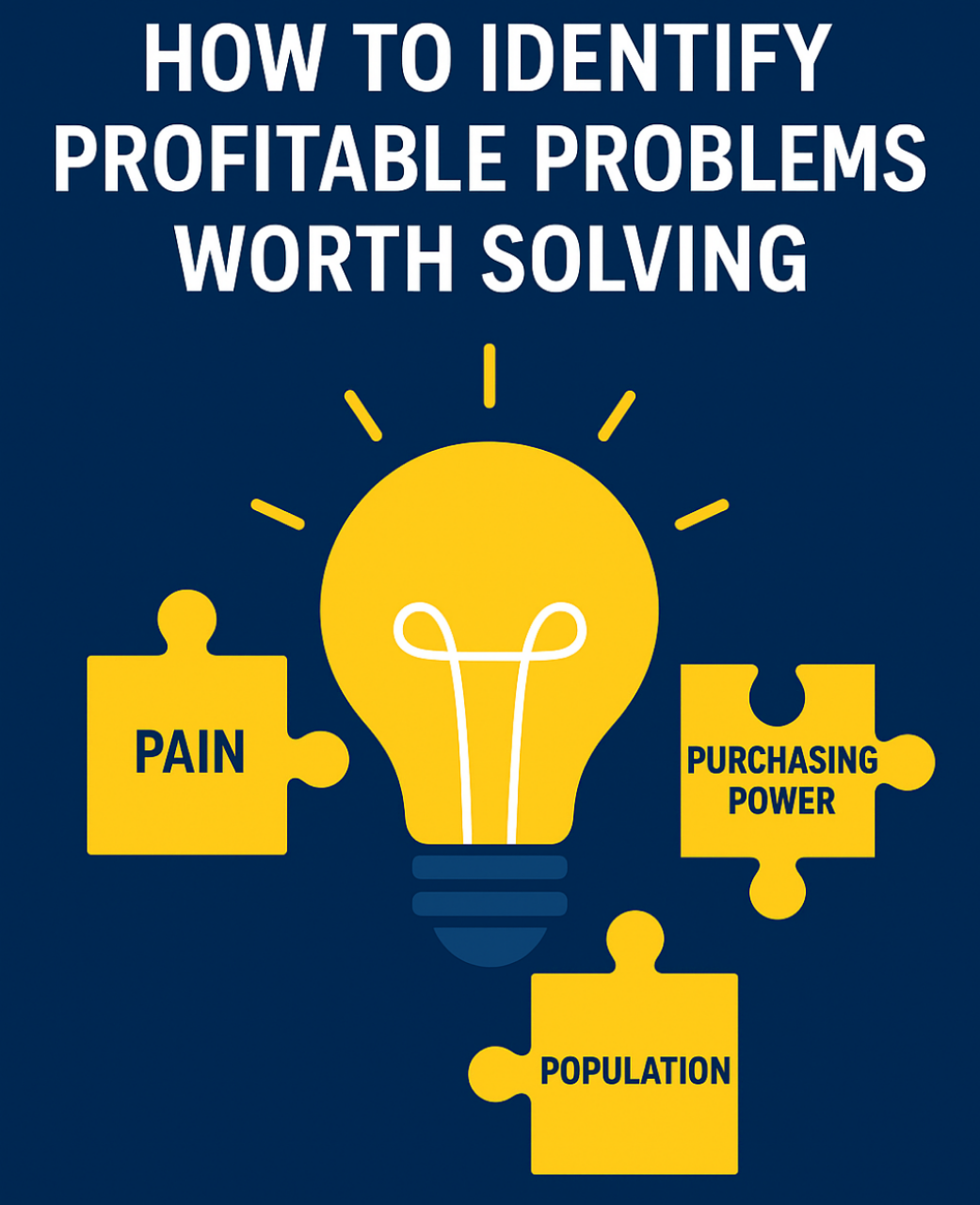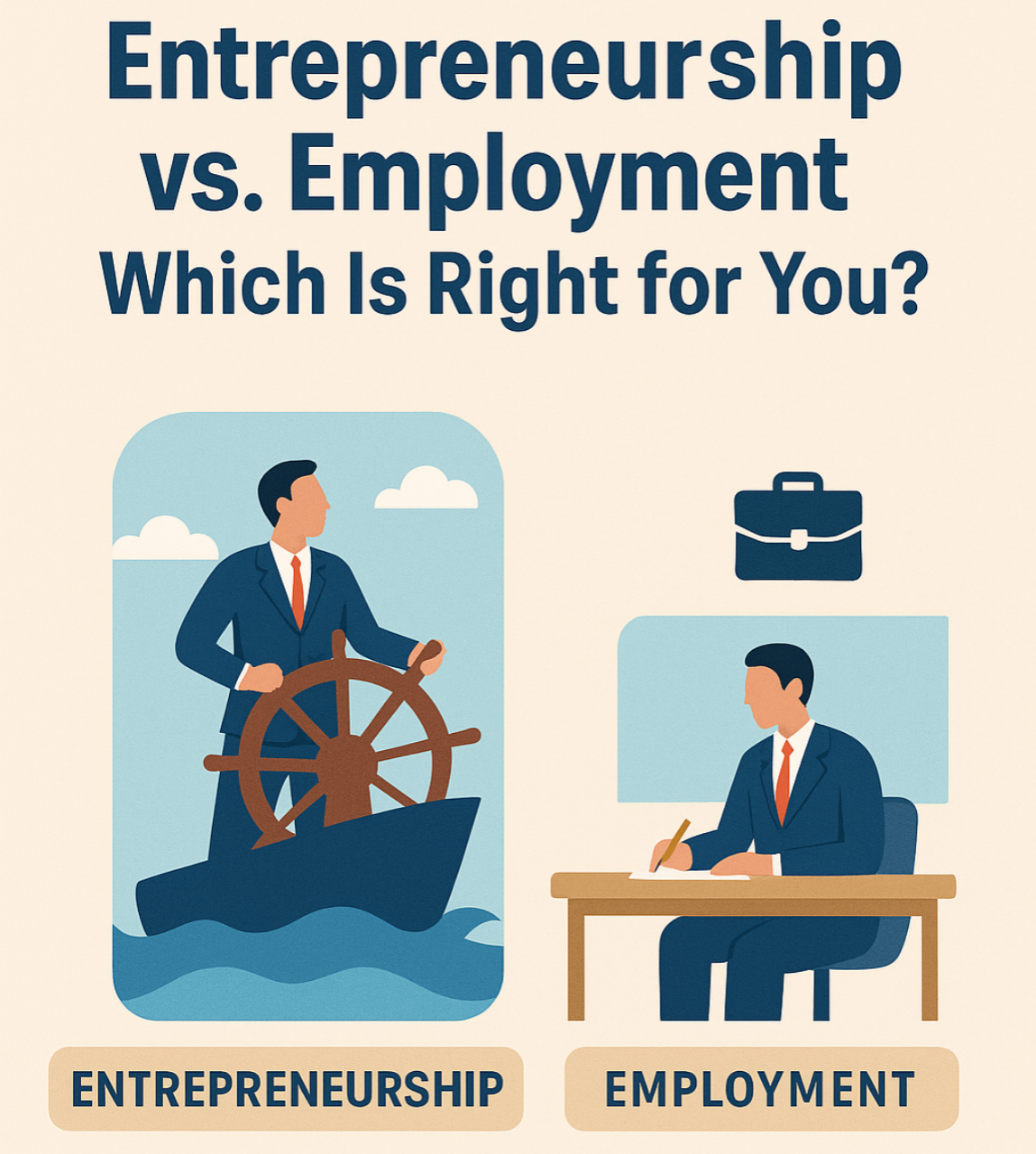Every successful business — from Apple to Airbnb — started by solving one real problem that people were desperate to fix.
But here’s the catch:
👉 Most people don’t fail in business because they lack ideas — they fail because they build solutions to the wrong problems.
In over 20 years of entrepreneurship, business consulting, and investment, I’ve discovered one golden truth:
“Money follows value, and value comes from solving real, painful problems.”
In this guide, I’ll walk you step-by-step through how to identify profitable problems worth solving — the kind of problems that can turn an ordinary idea into a thriving business.
Let’s dive in.

1. Understand the Foundation: What Makes a Problem Profitable?
Not every problem is worth solving — at least not from a business standpoint.
A profitable problem has three key ingredients:
- Pain – People must feel the problem deeply enough that they want it solved.
- Example: Someone frustrated with slow internet is willing to pay extra for speed.
- Purchasing Power – The affected people must be able and willing to pay for a solution.
- A farmer may need irrigation tech, but if he can’t afford it, it’s not yet a profitable problem.
- Population – There must be enough people with that problem to sustain a business.
- One person’s pain isn’t enough. But if thousands feel it, it’s gold.
Think of it like mining for gold:
The “pain” is the gold vein. “Purchasing power” is your mining equipment, and “population” determines how big the mine is.
2. Start with Observation: Become a “Problem Detective”
Successful entrepreneurs are great observers — they see problems others ignore.
Here’s how to train your eyes and mind to spot opportunities:
🕵️ Step 1: Watch People
Every complaint, frustration, or inefficiency is a potential business idea.
Ask yourself:
- What frustrates people in my community, workplace, or industry?
- What do people frequently say “I wish there was a way to…” about?
- What do I personally struggle with daily?
Example:
Airbnb started when two friends noticed hotels were fully booked during a big conference — so they rented out air mattresses in their apartment. That small observation became a billion-dollar company.
3. Focus on Problems, Not Just Ideas
New entrepreneurs often fall in love with their ideas, not the problems those ideas solve.
But successful businesses are problem-first.
Here’s why:
- Ideas can fail; real problems never run out.
- Problems create demand; ideas only create supply.
👉 Instead of saying, “I want to build an app,” say,
“People in my city struggle to find trusted home cleaners. How can I make that easier?”
When you focus on the problem, your creativity naturally designs the best solution.
4. Validate the Problem Before Building Anything
Before investing time or money, confirm that the problem is:
- Real
- Painful
- Common
Here’s how to test that:
✅ Ask Real People
Talk to at least 10–20 people who might have the problem.
Ask:
- How often does this problem affect you?
- What have you tried to fix it?
- How much would you pay if someone solved it completely?
If people:
- Complain emotionally (“It drives me crazy!”)
- Already spend money trying to fix it
- Ask when your solution will be ready
…then you’ve found a profitable problem.
5. Look for Problems in the Right Places
Here are five golden zones where profitable problems often hide:
1. Growing Industries
Where there’s growth, there’s friction — and friction means opportunity.
💡 Examples: Renewable energy, online learning, AI tools, health tech, logistics.
2. Daily Frustrations
Everyday annoyances can be goldmines.
💡 Example: Uber was born because people hated waiting for taxis.
3. Emerging Trends
New technologies or regulations often create new problems.
💡 Example: As more people work remotely, tools for virtual collaboration exploded.
4. Your Personal Experience
Sometimes your pain point is shared by millions.
💡 Example: Spanx founder Sara Blakely created it because she couldn’t find flattering undergarments.
5. Under-served Communities
Look for groups ignored by big businesses.
💡 Example: A platform that helps local artisans sell online in rural areas.
6. Evaluate the Profit Potential (The 3M Test)
When I mentor new entrepreneurs, I tell them to test every problem using the 3M Rule:
| M | Meaning | Key Question |
|---|---|---|
| Market | Are there enough people with this problem? | How big is the demand? |
| Money | Will people pay for a solution? | Is there purchasing power? |
| Motivation | Do they feel the pain enough to take action? | How urgent is it for them? |
If your problem scores high in all 3 areas, congratulations — you’re on to something big.
7. Avoid the “Entrepreneur’s Trap”
New entrepreneurs often fall into this trap:
They create solutions for problems that don’t exist.
You can avoid this by:
- Never assuming what people need.
- Always testing your assumptions with real conversations.
- Being flexible — if the problem isn’t real, pivot quickly.
Remember: The goal is not to be clever; it’s to be useful.
8. Real-Life Examples of Profitable Problem Discovery
| Company | Problem They Solved | Result |
|---|---|---|
| Airbnb | Travelers couldn’t find affordable short-term lodging | Global hospitality disruptor |
| Uber | Commuters couldn’t find reliable taxis easily | Multi-billion dollar ride-sharing industry |
| Canva | Non-designers struggled to create professional graphics | Democratized design for everyone |
| Zoom | Video calls were complicated and unreliable | Became essential for remote work worldwide |
Each of these companies identified a clear pain point, confirmed demand, and built a simple solution — that’s the secret formula.
9. Tools and Methods to Help You Find Profitable Problems
Here are practical tools to uncover problems worth solving:
| Tool/Method | How It Helps |
|---|---|
| Google Trends | See what people are searching for most |
| Social Media Comments & Forums | Identify frustrations and complaints |
| Customer Reviews (Amazon, Yelp, etc.) | Spot recurring pain points in existing products |
| Reddit & Quora | Learn what questions people keep asking |
| Surveys & Interviews | Validate problems directly from your audience |
10. Turning a Problem into a Profitable Business Idea
Once you’ve identified a painful, popular, and payable problem:
- Define it clearly in one sentence.
“Busy parents struggle to find safe after-school care for their kids.”
- Brainstorm simple ways to solve it.
- Choose the most practical and testable one.
- Build a small version (prototype) and test it with real users.
- Refine it based on feedback — then scale.
That’s how successful entrepreneurs start: not with perfection, but with clarity.
Conclusion: The Hidden Gold Is in the Pain
If you remember nothing else, remember this:
“Every frustration is a seed of innovation.”
The difference between a struggling entrepreneur and a successful one is how they see problems.
Where others complain, entrepreneurs create solutions.
Where others see obstacles, entrepreneurs see opportunity.
Start today — open your eyes, listen more, and look for real pain points around you.
That’s where your next million-dollar idea is hiding.


